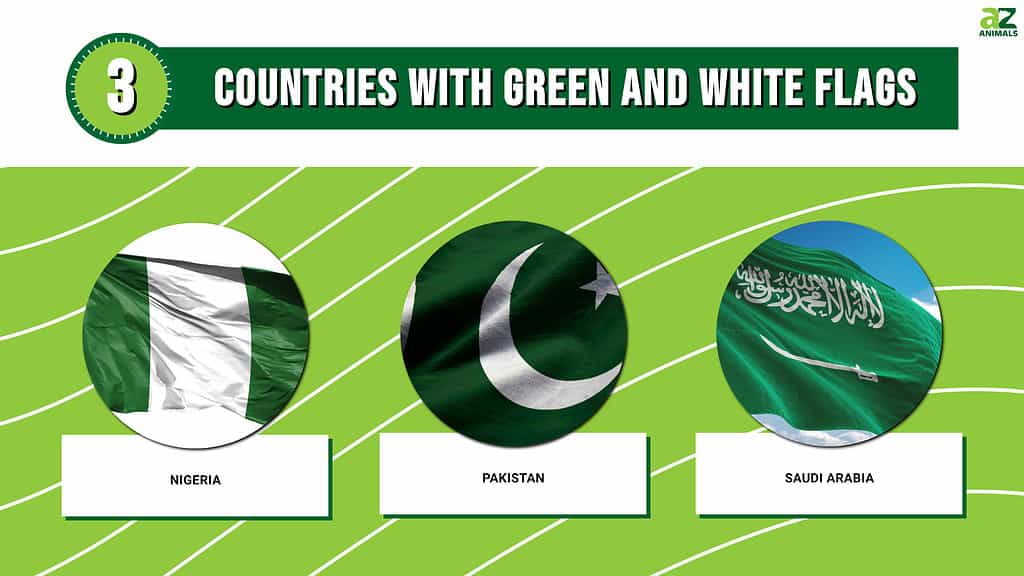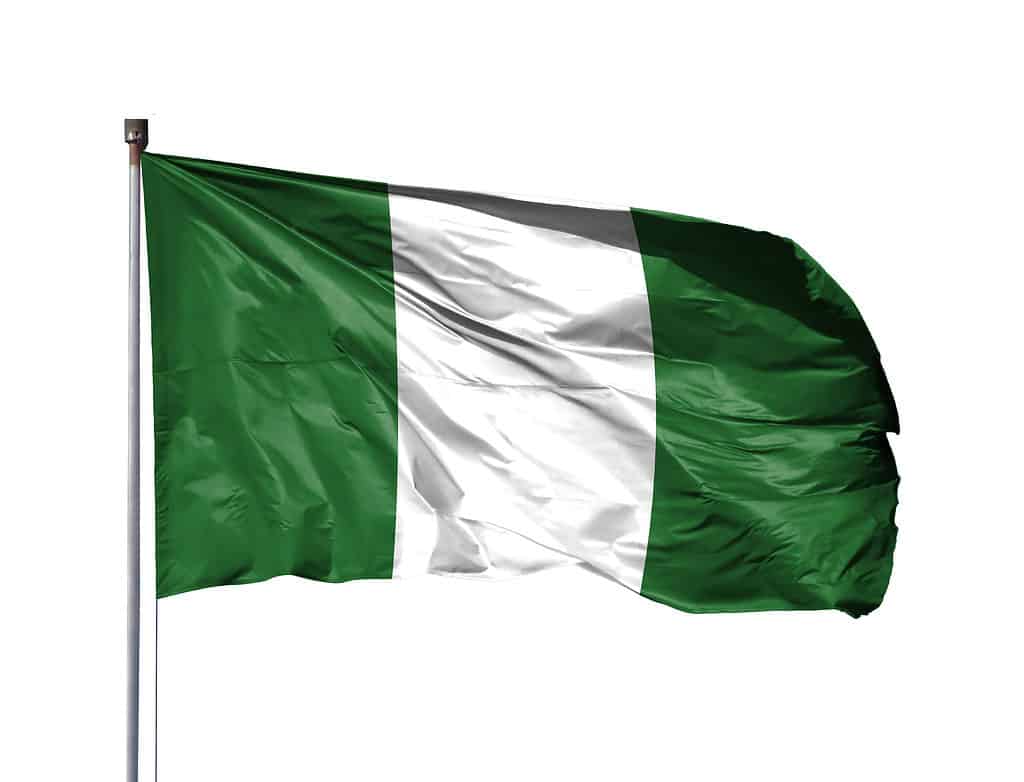
The number of nations in the world is staggering. Their areas, locations, populations, national symbols, emblems, and flags are all unique from one another. Learning about the flags of other countries is a fascinating topic. Have you ever been curious about the history of a country’s flag, the meaning of its symbols, or the significance of its colors? If that’s the case, you’ll enjoy reading this!
Today we will explore the only countries flying green and white flags around the world. There are currently only three countries with these two colors adorning their flags. Let’s explore what each of these flags represents to their nation and what these specific colors signify to them.
1. Nigerian National Flag

The flag of Nigeria is a vertical tricolor in green, white, and green.
©Millenius/Shutterstock.com
Michael Taiwo Akinkunmi conceived of the idea for the flag of Nigeria in 1959 after a contest was held by the National Planning Committee to determine the flag’s design. Over 3000 entries in all were received. The chosen flag has three horizontal green, white, and green stripes. On October 1, 1960, the country’s day of independence, this design was formally adopted as the national flag!
The green represents agriculture, and the white represents strength and unity. Akinkunmi selected the colors because of their historical significance; he wanted the flag to represent optimism for the Nigerian people. Since Nigeria’s independence, the flag has been flown proudly over the country’s capital and major cities.
2. Pakistani National Flag

The Pakistan Flag is green with a white crescent and star.
©iStock.com/shaadjutt
Three days before the Partition of British India, on 11 August 1947, the All-India Muslim League adopted the flag of Pakistan at a meeting of the Constituent Assembly of Pakistan. This flag would go on to become the official flag of the Dominion of Pakistan. When a constitution was enacted in 1956, it was kept, and it is still used as the national flag of the Islamic Republic of Pakistan today. The flag of Pakistan is green with a white stripe to the left and a white crescent and star. It holds much symbolism and is even mentioned in the third stanza of the nation’s anthem.
The vast majority of the country’s population is Muslim, as indicated by the field’s dark green tone. Additionally, the flag features a single white, vertical stripe to its left. The people of color are represented by the bar. The religious significance is attributed to the crescent moon in Islam because of the hope it represents for the future. Lastly, the star is a symbol of enlightenment and wisdom.
3. Saudi Arabian National Flag

The Saudi flag features a white sword and text on a solid green background
©iStock.com/daboost
In 1932, Hejaz and Nejd merged to form what is now known as Saudi Arabia. The flag is green with a white vertical stripe and features a white slogan and a sheathed scimitar (sword). In 1934, the width of the white vertical stripe was halved, and by 1938, it had been eliminated entirely. 1973 saw the introduction of the current flag.
The flag of Saudi Arabia is dark green and features the Muslim creed. Underneath the creed, a white sword is seen. Islam is symbolized by the color green. Swords are a symbol of fair and efficient judicial processes. The words “There is no deity but Allah; Muhammad is the Messenger of Allah” make up the creed or shahada that is displayed on the flag. In an interesting twist, the flag reads the same left to right as it does right to left, and the shahada has the same meaning either way. Initially introduced in 1973, this flag is still in use today.
In Conclusion
Although many flags across the world, cities, states, and countries alike hold both of these colors, the three we explore today are the only nations in the world to use only green and white in their designs. The colors used in a flag’s design are often the first thing people notice. Although each color has its own meaning based on each nation’s history and culture and there isn’t universal agreement on what each of these hues represents, there are some commonalities.
White is typically associated with peace and unity. Additionally, it may represent openness and peace. It can stand in for snow on the mountains as a natural metaphor. Green is a unique color that is typically associated with meanings pertaining to the natural world. Some examples of these are farmland, grasslands, woodlands, and other landscapes typical to a given country. However, green also has religious connotations and is associated with feelings of love, hope, and joy. Others think it’s a symbol of prosperity, wealth, and fertility.
Up Next:
- White Flag with Red Cross: England Flag History, Meaning, and Symbolism
- Blue Flag with White X: Scotland Flag History, Meaning, and Symbolism
- Black, Red, and Green Flag: The History and Meaning of the Pan-African Flag
The photo featured at the top of this post is © Tatohra/Shutterstock.com
Thank you for reading! Have some feedback for us? Contact the AZ Animals editorial team.






